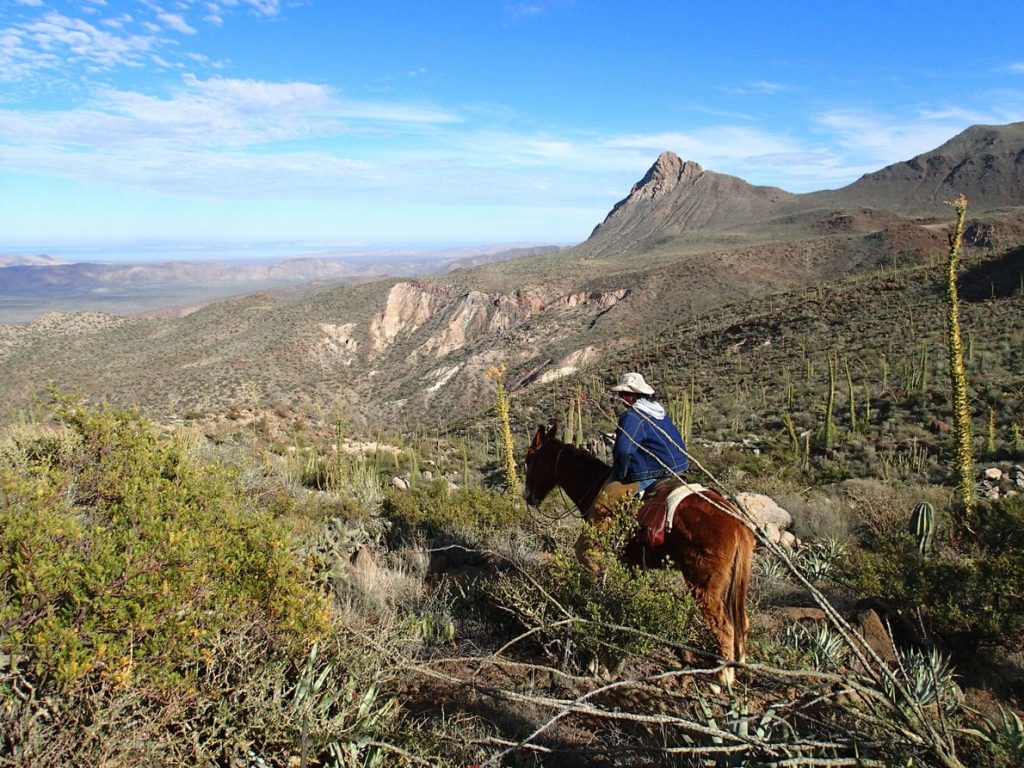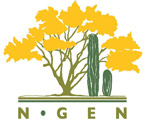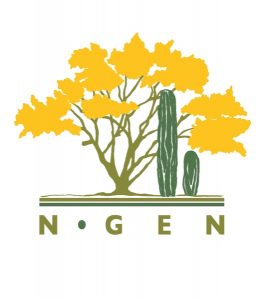Sula Vanderplank, Biodiversity Explorer, Botanical Research Institute of Texas; Board Member, Next
Generation Sonoran Desert Researchers.
With Trudi Angell, Leslie Pringle, Nacho Chiapa, Tomás Murillo, Matilde Murillo, Andrea Flores and others.
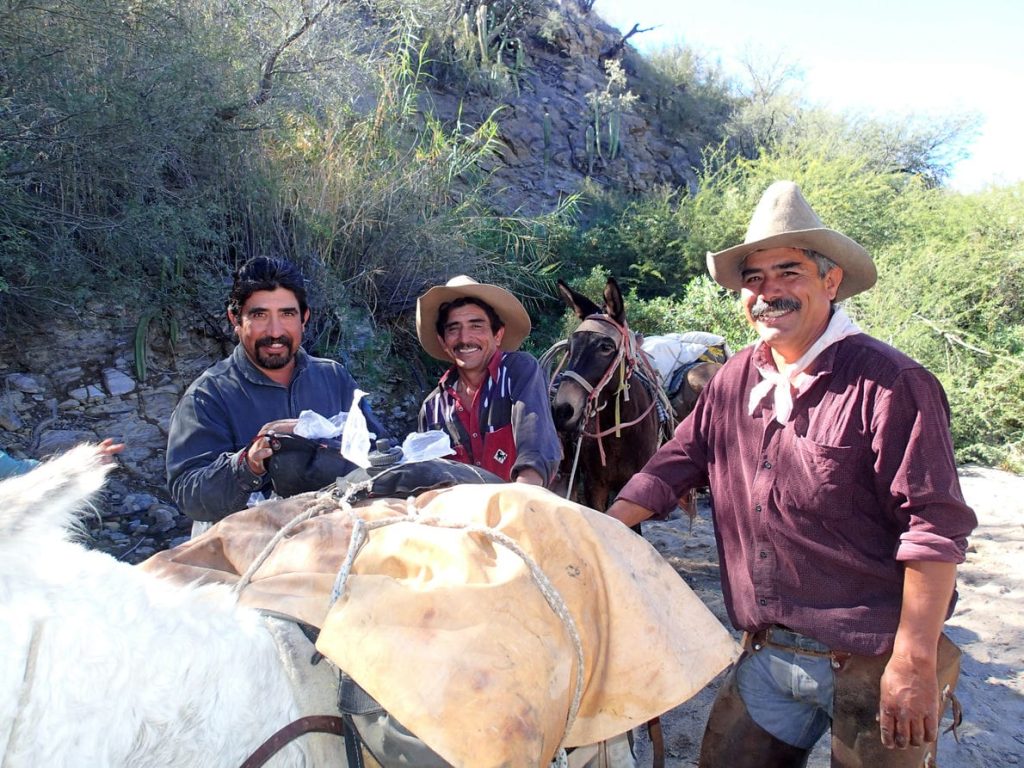
We rode in the truck with bales of hay on the roof, down a long, straight and dusty road, that took us to Rancho La Union, a beautiful ranch, with kitchen cabinets made of cardón (cactus) wood, with handles of deer horn, and fabulous hosts. A 15-day old foal pranced around her mother in the yard, and we made holes in the new leather on my spurs, and cooked what would be our last stove-top meal for quite a while. The intrepid and inspirational group of women travelling the entire length of the Baja California peninsula on mule back, known as “La Mula Mil” had invited me to join the most remote stretches of their journey to collect plants in little visited mountain ranges. The women are riding to promote safe travel in Baja California and women’s independence. Their route roughly follows that of a group that made the trek in reverse 50 years ago, in 1967, from Tecate (on the US-MX border) to the very tip of the Baja California peninsula at Cabo San Lucas. We set out early the next morning to Rancho Santa Cruz, where a surprising number of annual wildflowers were in bloom and I was delighted to find the parasitic plant ‘Orobanche’ or ‘broom-rape’ poking out of the sand. The flowering heads have quite a strange spike-like appearance and are purple (no green parts as they do not need chlorophyll to generate food, they simply steal their nutrients from other species), when I returned with these strange specimens the ranchers teased me mercilessly that I had actually dug up and murdered baby cacti by mistake and there was much laughter around the campfire.
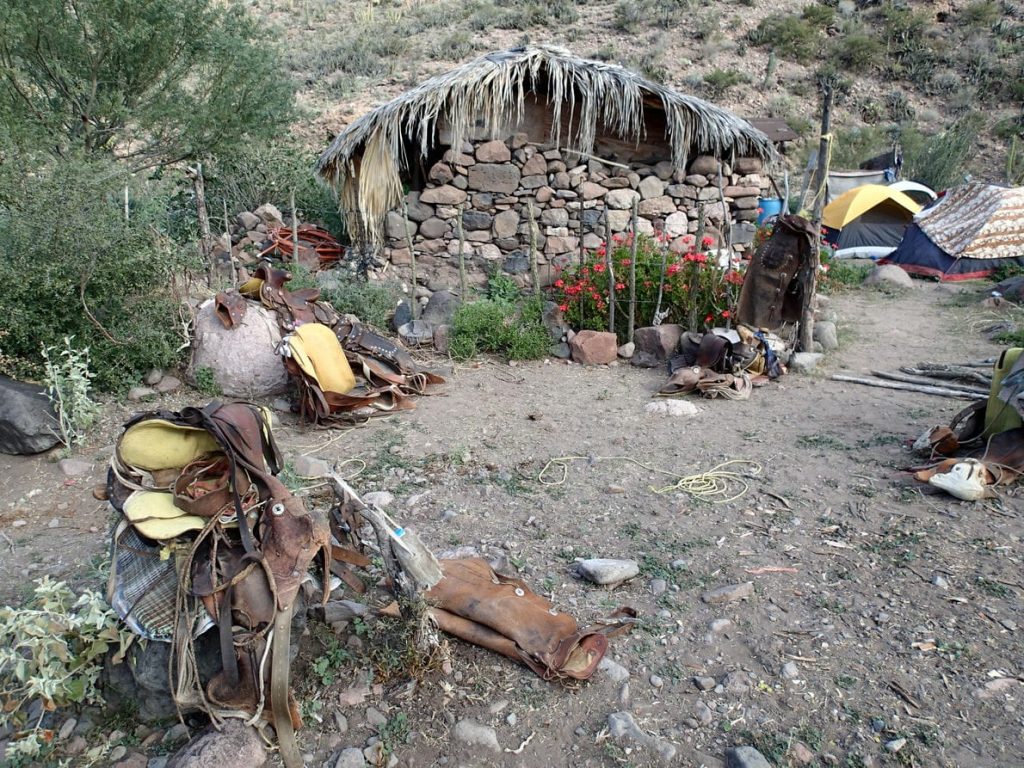
We spent the next few nights slowly approaching Sandia Mountain – a lone high-elevation peak at the southern end of the Sierra Libertad. This peak had been the highlight of the previous expedition in 1967 for Reid Moran, botanist of the San Diego Natural History Museum, and I was clutching his fieldnotes and dreaming of what I might find at the top. The company was superb, and the sharing of stories, common names of plants, and endless regional anecdotes made the time pass quickly, despite my restlessness each day that we did not reach the base of the mountain. The sky was a glorious display of stars every night, and I was up around dawn every morning (although apparently my snoring woke everyone else up a little earlier). We made teas from ferns, roots, leaves and seed pods, and I learnt a little about local medicines and survival. Finally we made it to the base of Sandia Mountain and we were delighted to be united with Matilde and Andrea, who had ridden in from the East (near Bahia de Los Angeles). They had already been waiting for two days and were about to turn back when they heard us coming over the ridge.
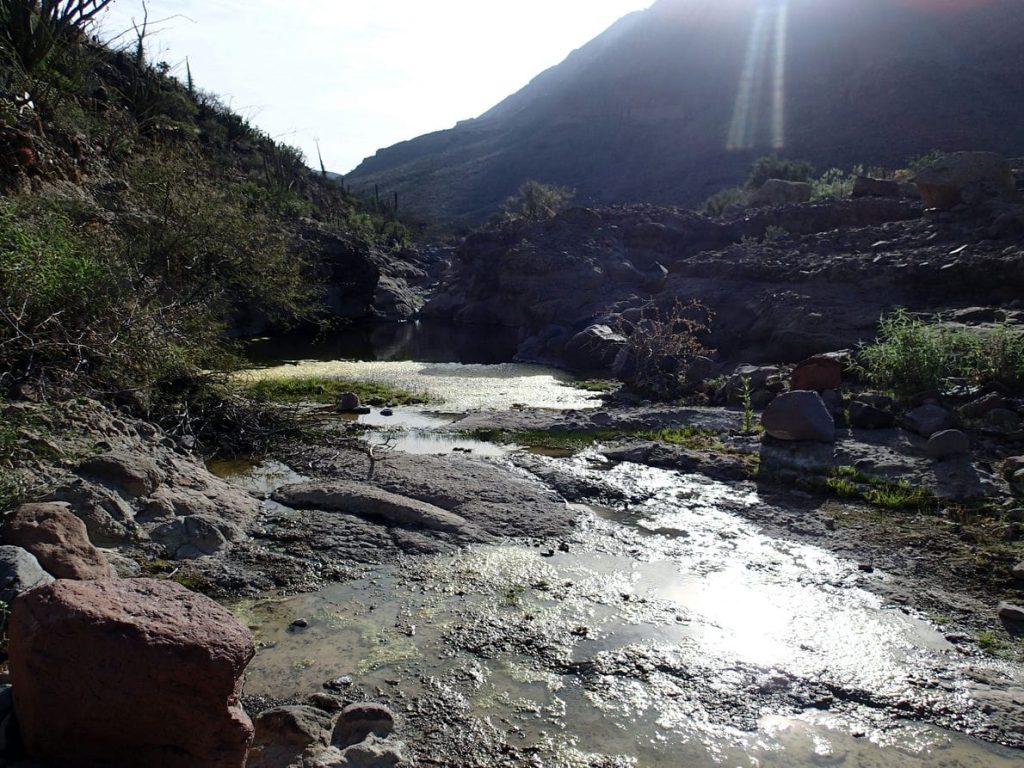
The trails had been abandoned for many years, in some places more than 30 years have passed since anyone was known to pass through these hills and valleys. The trail was invisible to my untrained eyes and we often had to carve our way with machetes through the cholla thickets and masses of spiny shrubs. Finally arriving at the water-hole, we had quite a surprise. All those years without cattle or people had left the water-hole to fill with sediment and the vegetation had formed a thick dense canopy. There was no way to water our mules and donkeys. Tomás and Matilde kindly drove the animals to a water hole two hours away, but it was shallow and dirty with little water and there was no way we would be able to summit Sandia the next day, we needed to head down the mountain to reliable water. Despite the obvious dismay, I was fascinated by the processes that had closed these trails and water-holes. Ranch abandonment seemed to have lowered species diversity at the waterholes and many of the species that Reid documented here 50 years ago were now dead or absent.
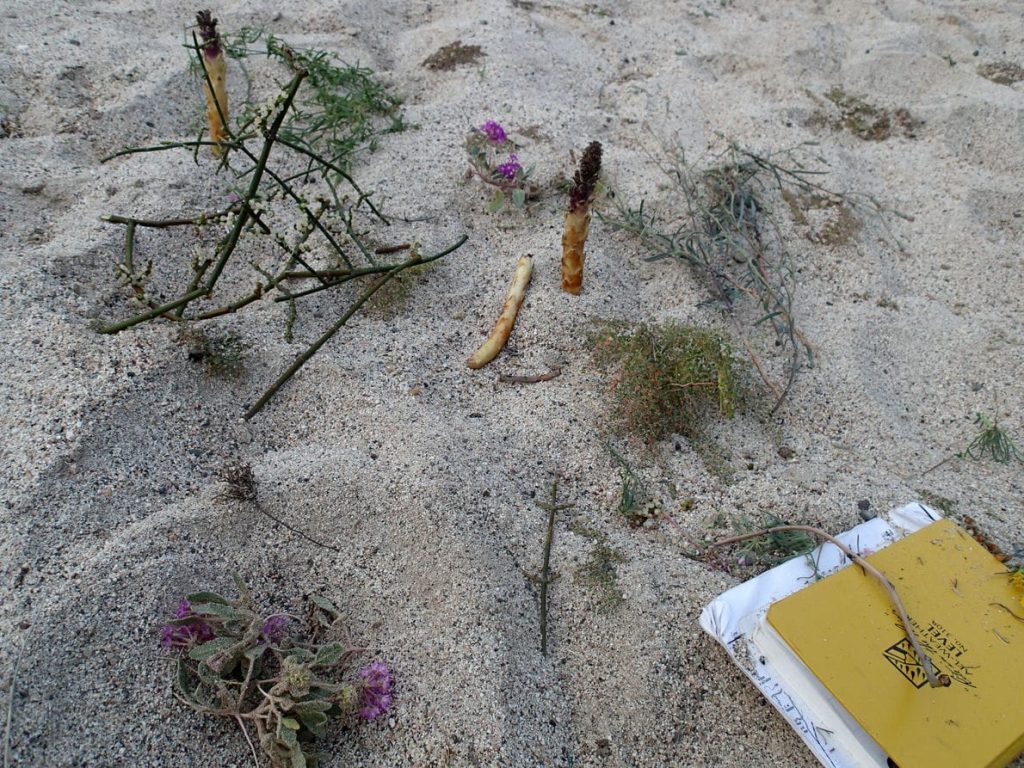
We changed a course and headed to a spring that turned out to be a botanists dream….. rocky cliffs with unusual plants hanging from the walls of the canyon and sprouting in the moist sand. I collected so many plants I had to take off my jacket and use it as a cradle for all the flowers I gathered there. The next stretch of our trip was a similar story, a long abandoned ranch, a corral full of cholla and an overgrown waterhole that took hours to open up for the animals, but coming down towards San Borja we had the pleasure of stumbling across a cattle round-up at Rancho La Pila. Here water flowed down the wide open rocks, the cattle ran free and the house was surrounded by flowers.
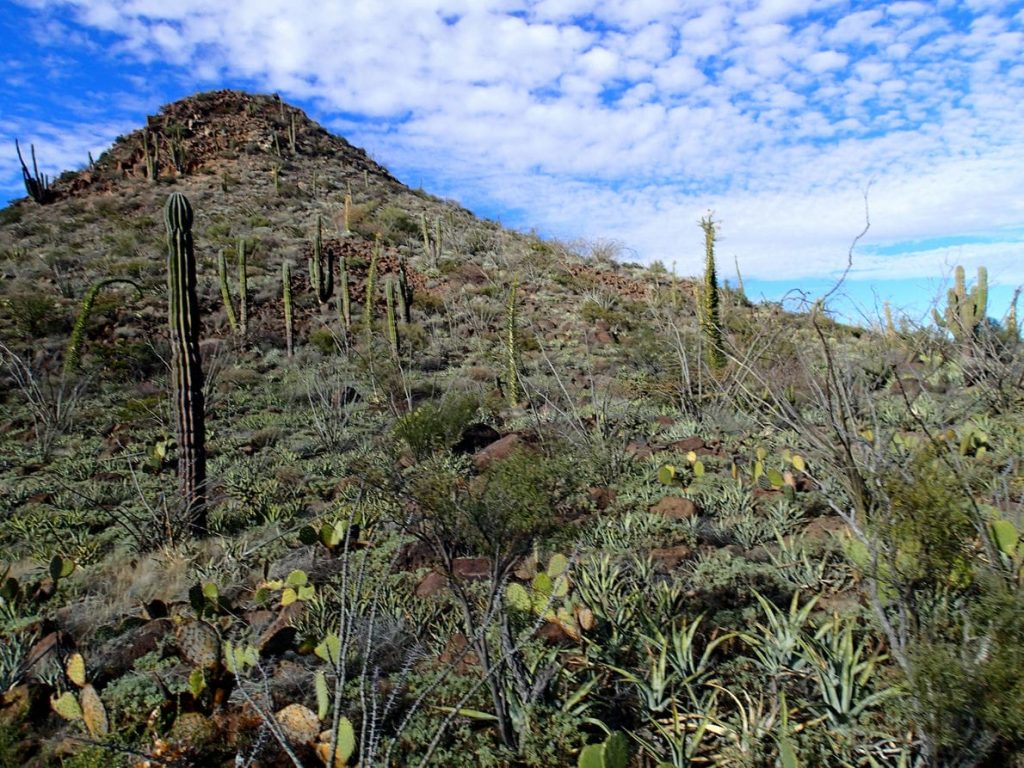
I made more than 100 collections of different plants, many in areas never previously visited by botanists. I learnt a lot about the landscape, the role of the ranches and the cattle, and I continued to greatly admire the wonderful people that live in the challenging terrain of the Sonoran desert.
